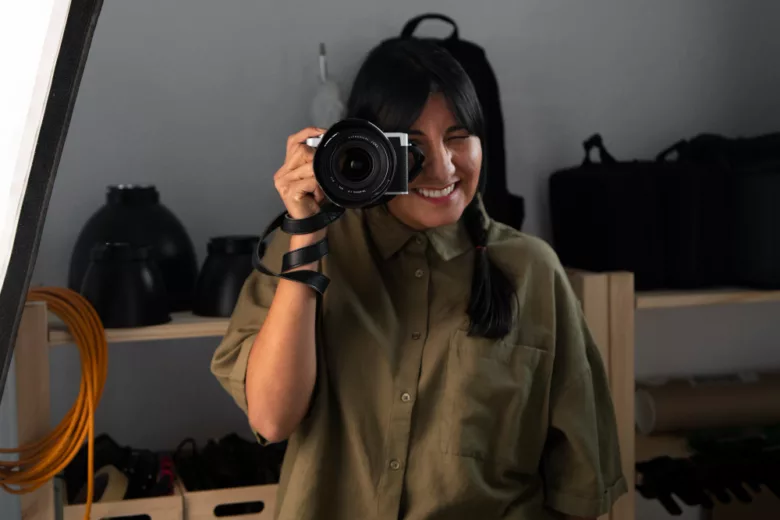Photography, an art form that enables individuals to capture moments in time and express their creativity through images, can be mastered through proper camera control. This article will guide you through the crucial aspects of camera control, equipping you with the knowledge and skills needed to create stunning photographs. Whether you’re a beginner just starting your photographic journey or an enthusiast looking to enhance your skills, understanding camera control is crucial. By enrolling in a photography course and delving into the intricacies of camera settings, exposure, composition, and more, you can unlock the full potential of your camera and capture extraordinary images that tell captivating stories. Embark on this educational journey and discover the power of camera control in shaping your photography.
Choosing the Right Setting for the Scene
Camera modes provide different levels of control over settings like aperture, shutter speed, and ISO. Manual mode offers complete control, while aperture priority, shutter priority, and program modes offer varying levels of automation. Understanding when to use each mode is essential for adapting to different lighting conditions and creative preferences. Manual mode is ideal for situations requiring precise control over exposure, while aperture priority allows control over depth of field. Shutter priority is useful for capturing motion, and the program mode balances automation and control.
Mastering Aperture To Control Depth of Field and Focus
Aperture refers to the camera lens opening that determines how much light enters the camera. It also controls the depth of field, which determines the range of sharpness in an image. A wider aperture (lower f-stop number) creates a shallow depth of field, isolating the subject and creating a blurred background effect. A narrower gap (higher f-stop number) increases the depth of field, resulting in more elements in the scene appearing sharp. Understanding the aperture allows control over focus and creating the desired visual impact in images.
Controlling Shutter Speed:
Shutter speed refers to the time the camera’s shutter remains open. A faster shutter speed freezes motion, while a slower speed introduces motion blur. Fast shutter speeds are ideal for capturing action shots, such as sports or wildlife photography, freezing a moment. Slow shutter speeds can creatively capture motion blur, such as flowing water or light trails. Understanding how to control shutter speed enables conveying images’ desired sense of motion.
Managing ISO To Balance Exposure and Noise
ISO determines the camera’s sensitivity to light. Lower ISO values are suitable for well-lit conditions, while higher ISO values are necessary for low-light situations. However, increasing the ISO can introduce digital noise or graininess to the image. Understanding how to manage ISO allows striking a balance between exposure and noise, ensuring optimal image quality in different lighting conditions. Increasing the ISO in low-light situations helps maintain proper exposure, but finding the right balance is vital to minimize noise.
White Balance To Preserve Accurate Colours
White balance involves adjusting the colours in an image to ensure they appear natural and accurate. Different light sources have different colour temperatures, affecting the overall colour cast in images. Setting the appropriate white balance helps preserve accurate colours and convey the intended mood and atmosphere of the scene. For instance, a warm white balance can enhance the cozy feeling of a sunset, while an extraordinary white balance can give a refreshing tone to a snowscape. Understanding white balance allows capturing images with true-to-life colours and avoiding unwanted colour casts.
Utilizing Exposure Compensation:
Exposure compensation allows adjusting the exposure levels set by the camera’s metering system. It is advantageous when the camera’s automatic exposure may not accurately capture the desired exposure. By dialling in positive or negative exposure compensation, fine-tuning the exposure can achieve the images’ desired brightness or darkness. For example, when photographing a subject against a bright background, applying negative exposure compensation helps avoid overexposing the subject. Understanding how to utilize exposure compensation provides greater control over exposure and allows the creation of images that match artistic vision.
Mastering Composition:
Composition involves arranging elements within the frame to create visually pleasing images. Considerations include the rule of thirds, leading lines, symmetry, and balance. Mastering composition techniques guides the viewer’s eye and produces images with impact. Placing the main subject off-centre using the rule of thirds adds visual interest and makes sense of balance. Experimenting with different angles, perspectives, and framing techniques allows for unleashing creativity and capturing compelling images.
Understanding Focus and Depth of Field:
Another crucial aspect of camera control is understanding focus and depth of field. Focus determines the sharpness and clarity of your subject, while the depth of field refers to the range of distances in the scene that appear acceptably sharp. By mastering focus techniques, such as autofocus and manual focus, you can ensure that your subject is properly focused, whether a person, a flower, or a distant landscape. Understanding depth of field allows you to control the amount of background blur or sharpness in your images, creating different visual effects and emphasizing your subject. By exploring focus and depth of field, you can add another layer of creativity to your photography and capture images with stunning clarity and visual impact.
Conclusion:
In conclusion, mastering camera control is a vital aspect of photography. By understanding camera modes, aperture, shutter speed, ISO, white balance, exposure compensation, and composition techniques, you can bring your photographic vision to life. Whether you’re capturing landscapes, portraits, or any other subject, the knowledge and skills acquired through mastering camera control will elevate your photography to new heights. So, seize the opportunity to learn and grow through self-study or a photography course. Embrace the joy of controlling your camera and capturing images that inspire and evoke emotions. Let your creativity shine, and share your unique perspective with the world through the power of photography.
